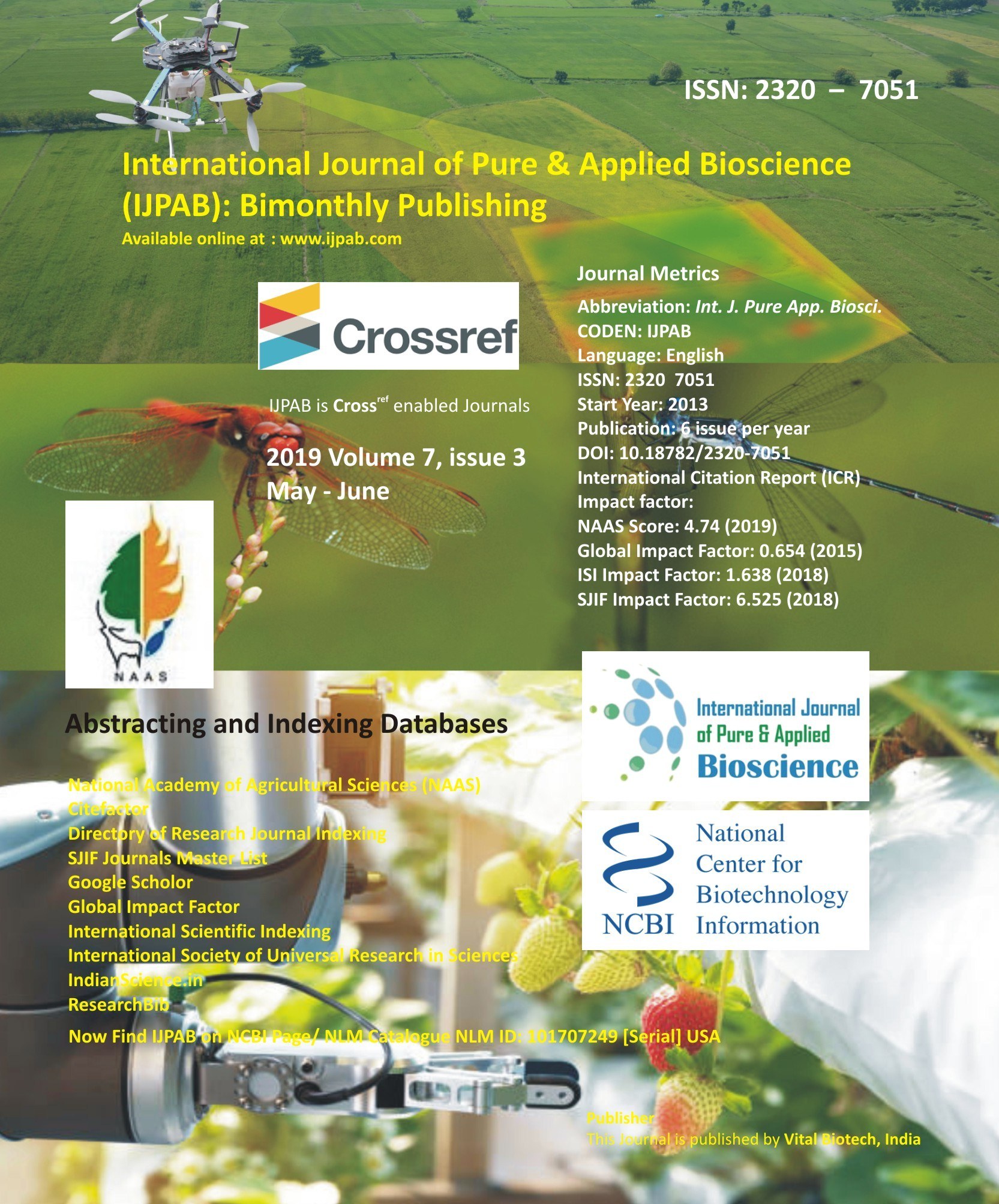
-
No. 772, Basant Vihar, Kota
Rajasthan-324009 India
-
Call Us On
+91 9784677044
-
Mail Us @
editor@ijpab.com
International Journal of Pure & Applied Bioscience (IJPAB)
Year : 2019, Volume : 7, Issue : 3
First page : (230) Last page : (233)
Article doi: : http://dx.doi.org/10.18782/2320-7051.7488
Correlation and Path Coefficient Analysis in Castor (Ricinus communis L.)
Nagarajan, S.*, Viswanathan, P. L., Venkatachalam, S. R., Manickam, S. and Ganapathi, N.
Centre for Plant Breeding and Genetics, Tamil Nadu Agricultural University, India
*Corresponding Author E-mail: snagarajan1971@gmail.com
Received: 15.04.2019 | Revised: 21.05.2019 | Accepted: 27.05.2019
ABSTRACT
India is leading country in area, production and productivity of castor crop. Castor crop is cultivated nearly 30 diverse countries in the world. Castor oil is mainly used in production of aircraft lubricants, linoleum, printer inks, paints and electrical insulations. Determination of the correlation coefficient of yield and its components is undoubtedly helpful to breeders in selecting suitable plant types based on simultaneous selection of two or more characters, a better approach of character association is the path coefficient analysis. The experimental material comprised of 68 genotypes during Rabi 2015 at Tapioca and Castor Research Station, Yethapur. Analysis of variance (ANOVA) was computed from the plot means and tests of treatment significance were done for the traits measured. The genotypic and phenotypic correlations were of comparable magnitude. Genotypic correlation was in most cases higher than the phenotypic correlation. The highest significant genotypic correlation was found between seed yield per plant and total number of spike per plant (0.39) Total number of spikes shows highest positive total indirect effect (0.386) through days to 50 % flowering, days to 50% maturity and primary spike length. Days to 50% flowering and days to 50% maturity show negative total indirect effect. But the negative total indirect effect was very low and negligible. From the results obtained, it would be reasonable to suggest the breeder who involved in increasing the seed to concentrate more on total number of spike per plant, number of capsules per primary spike, days to 50 per cent flowering and plant height.
Key word: Ricinus communis L, Correlation analysis, Path analysis.
Full Text : PDF; Journal doi : http://dx.doi.org/10.18782
Cite this article: Nagarajan, S., Viswanathan, P.L., Venkatachalam, S.R., Manickam, S. and Ganapathi, N., Correlation and Path Coefficient Analysis in Castor (Ricinus communis L.), Int. J. Pure App. Biosci.7(3): 230-233 (2019). doi: http://dx.doi.org/10.18782/2320-7051.7488

